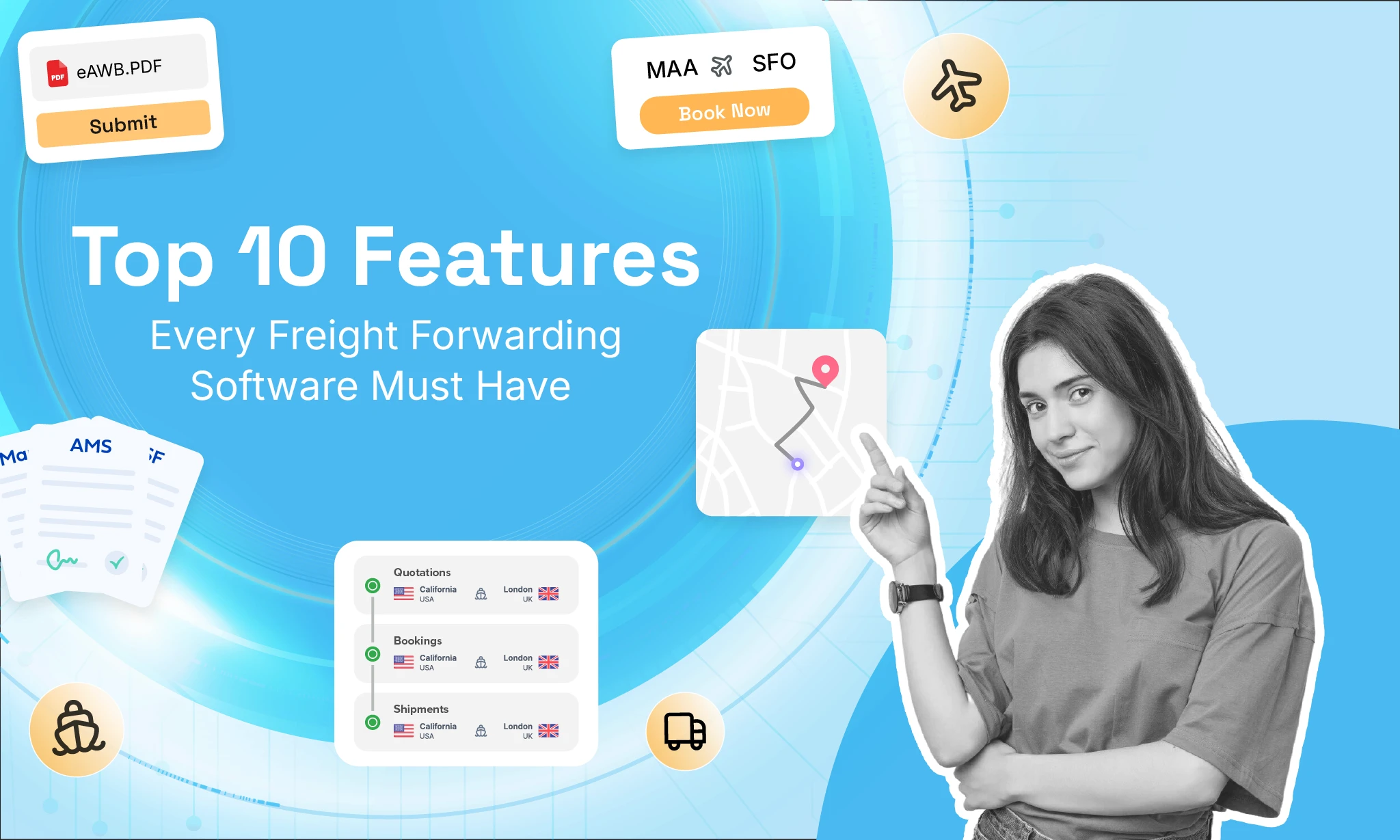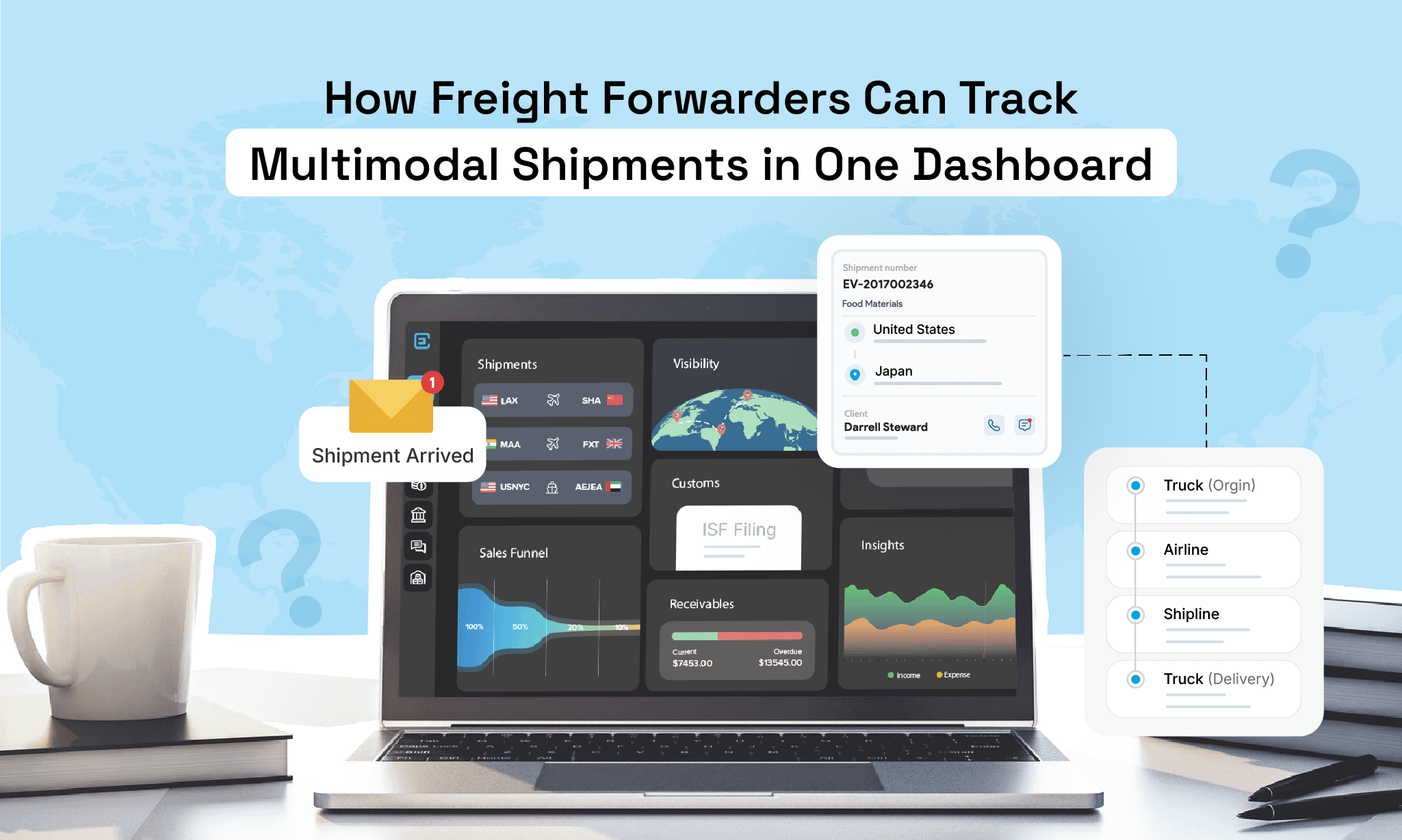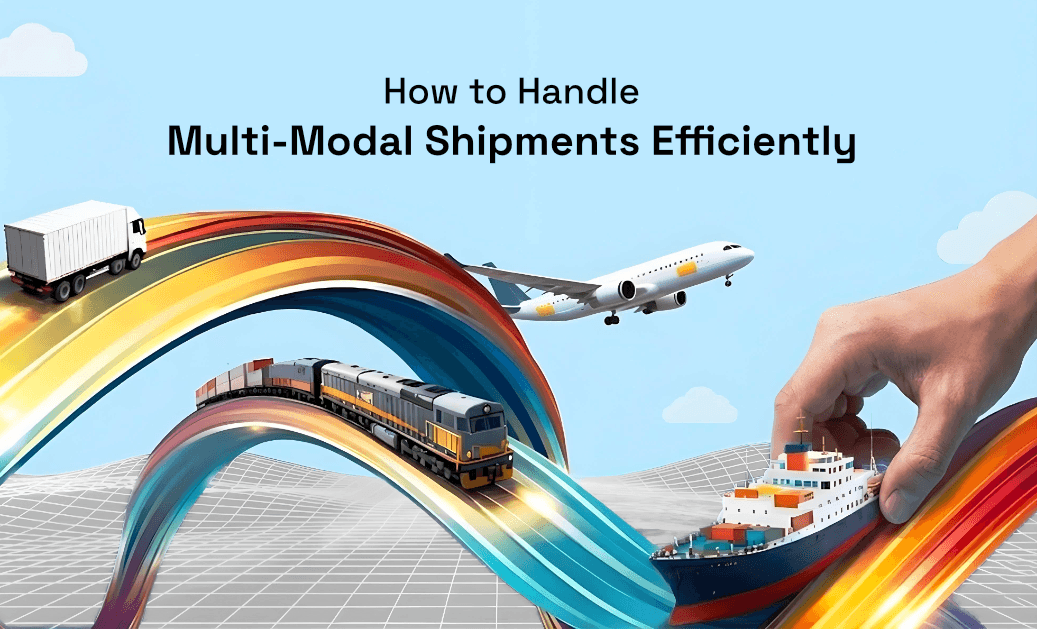How to Reduce Freight Costs: 10 Proven Strategies for 2025
Author:
Dharshini Balamurugan
Published On:
Apr 28, 2025
1 min read
In a world where every penny counts, freight costs can quietly eat into your profit margins. For businesses, especially those dealing with high shipment volumes or global supply chains, transportation expenses and freight costs associated with various freight carriers are a major part of the operating budget. Transportation makes up a big slice of the operating budget, and if left unchecked, it can spiral fast.
Why does this matter now more than ever?
In 2025, the global logistics and supply chain industry is projected to cross $13.5 trillion, according to Market Research Future and Statista. Yet, nearly 30–35% of logistics spending is still wasted, thanks to poor route optimization, underutilized capacity, outdated systems, and manual delays. That’s a massive chunk of money that could be reinvested in innovation, growth, or customer experience.
Cutting freight costs doesn’t mean compromising on delivery timelines or service. With the right strategies- from better visibility to smarter planning- you can reduce costs and run a leaner, more efficient supply chain.
This guide walks you through proven, practical tactics from freight audits to intelligent route planning that can help cut costs, boost efficiency, and give you greater control over your logistics.
Key Takeaways
Freight forwarders are invested in reducing freight costs and improving logistics efficiency. It’s no longer optional, it’s a competitive advantage.
Cost-saving doesn’t mean cutting corners. There are robust, data-driven strategies from audits to optimization tools that help reduce costs while maintaining service quality.
Freight audits, smart route planning, and load optimization together can tackle invisible leaks and improve operational precision across the board.
Consolidation, multimodal shipping, and inventory sync help reduce the number of shipments, avoid empty miles, and bring down last-minute logistics expenses.
Sustainability is a silent saver. Greener practices reduce packaging weight, fuel consumption, and regulatory burdens while boosting brand reputation.
Digital tools and platforms like Freight Management Systems (FMS) centralize everything from booking to billing making decisions faster, smarter, and more cost-effective. With the right systems and mindset, you can ship better for less, ultimately reducing the overall cost of logistics operations.
How to Reduce Freight Costs
Conduct Freight Audits
Before you can fix a problem, you need to know where the leaks are. Freight audits are your starting point.
Freight costs typically comprise several components, such as transportation charges and fuel surcharges, which are crucial for logistics and supply chain managers to analyze.
Auditing your freight bills helps you spot overcharges, duplicate payments, billing errors, and even areas where you’re consistently paying more than you should. It’s essentially Track where your logistics spend is going.
Freight invoices are not immune to human error. From misclassified charges to incorrect fuel surcharges, mistakes happen often and they can be expensive. Freight audits help recover overpayments, uncover billing discrepancies, and provide transparency in carrier invoicing.
There are software tools and third-party services that can automate this process, but even a regular in-house review can go a long way. Look for patterns: are certain carriers constantly late or charging more? Are there fuel surcharges you didn’t anticipate?
Intelligent Route Planning
Taking the scenic route sounds nice, but not when it’s eating into your shipping budget. Smart route planning can dramatically reduce mileage, fuel use, delivery time, and save time.
Real-time GPS data, traffic patterns, weather alerts, and predictive analytics can transform how routes are planned. Route optimization software helps reduce empty miles, avoid high-traffic zones, and optimize delivery windows, thereby saving you time, fuel, and money.
Even shaving off 5% of travel time across hundreds of deliveries per month adds up to big savings.

Streamline Inventory
Efficient inventory management = fewer emergency shipments, reduced storage costs, and less idle stock.
By syncing your inventory with real-time demand and shipping schedules, you can avoid expedited shipping charges and consolidate deliveries better. Lean inventory strategies like JIT (Just-In-Time) work wonders when coordinated properly.
CargoEZ’s freight management software integrates seamlessly with warehouse and inventory systems, helping you align product movement with shipping timelines, with a dedicated warehouse module that integrates your warehouse and logistics operations to ensure products move when they need to, and not a moment sooner or later.

Improve Load Planning and Utilization
Every inch of unused space in your shipment is lost revenue. Effective load planning ensures that trucks are filled efficiently, weight is balanced, and fewer trips are needed to deliver the same amount of goods.
Load planning is all about making sure every inch of cargo space is used effectively.
This involves determining the best way to stack, store, and organize freight to maximize capacity while ensuring safety and compliance. It can also reduce the number of trips, improve fuel efficiency, and minimize load/unload times.
Load optimization software can assist with 3D modeling to help you plan ahead and reduce guesswork.
Explore Multimodal Transportation
Single-mode transportation doesn’t always offer the best rate or efficiency.
Multimodal shipping refers to using a combination of air, sea, rail, and road can unlock huge savings.
Each mode has its own cost-benefit ratio. For example, rail might be cheaper than truck for long hauls, while air might be justified for high-value or time-sensitive goods. For time-sensitive shipments, air freight might be justified due to its speed, while trucking is more suitable for short-haul needs. Finding the right balance and strategically switching modes can cut costs and improve flexibility.

Adopt Sustainable Practices That Also Save
Sustainability and savings are not mutually exclusive. Companies that invest in green practices often benefit from lower fuel costs, reduced regulatory fines, and lower costs overall.
Sustainability isn’t just about saving the planet—it’s also a smart way to save money. Efficient resource use, reduced packaging weight, and optimized shipping materials can directly cut fuel consumption and freight costs.
For instance, lighter or reusable packaging means lower dimensional weight, which most carriers use for pricing. Choosing eco-friendly, localized suppliers reduces long-haul shipments, while greener fleets often have fuel-saving technologies that translate into savings for shippers. In some regions, there are tax credits and regulatory incentives for eco-friendly logistics investments.

Conduct a Transportation Assessment
Every now and then, step back and ask: “Is this really the best way to move my goods?”
A transportation assessment involves reviewing your current logistics strategy, delivery timelines, carrier partnerships, shipment types, and customer demands. It identifies bottlenecks, unnecessary steps, and hidden costs. A transportation assessment can identify various cost-saving opportunities, including load consolidation.
Sometimes, the fix is as simple as shifting fulfillment centers or switching carriers. Sometimes it’s bigger like changing distribution models.
Strategic Shipment Consolidation
Small and frequent shipments may feel convenient, but consolidating multiple shipments can significantly reduce transportation costs. Consolidating orders by destination, schedule, or product type can significantly reduce the number of trips and optimize truckload capacity.
Combining multiple smaller shipments into one larger one can lead to bulk rate discounts and fewer touchpoints.
The math is simple: fewer shipments = lower total cost per unit.
It also reduces the chances of damage, handling errors, and delays. If you’re dealing with suppliers or distributors in the same region, coordinate pickups or deliveries to bundle orders.
Outsource Transportation Management
You don’t have to do it all yourself. Third-party logistics providers (3PLs) bring expertise, networks, and tools to the table.
Engaging with a logistics partner that has a network of vetted carriers can enhance transportation management efficiency. They can often secure better rates due to their volume of business and streamline your freight operations with their systems and staff. Whether it’s a full-service logistics partner or just support for a specific region or task, outsourcing can be a cost-effective move.
That said, choose your partner wisely. Make sure they align with your business values, and ensure transparency in pricing and service levels.

Invest in a Freight Management System (FMS)
An FMS gives you visibility across your logistics ecosystem- from order creation to final delivery. You can optimize loads, monitor carrier performance, manage exceptions, and gain real-time visibility into shipment statuses.
Modern freight management platforms integrate seamlessly with ERPs, warehouse systems, and freight platforms, becoming the nerve center for logistics operations.
Old-school phone calls and emails to book freight? That’s a recipe for inefficiency. A digital freight forwarding software gives you instant access to rate comparisons, available carriers, and real-time tracking.
It saves time, gives you more options, and lets you make data-driven choices. These platforms often include performance analytics and built-in freight audit tools.
Minimizing Accessorial Fees
Accessorial fees are additional charges for services beyond standard shipping, such as liftgate delivery, inside delivery, or residential delivery. These fees can quickly add up, increasing overall freight costs.
To minimize accessorial fees, it’s important to clearly communicate shipping needs with carriers and understand the terms of service. Providing accurate shipment details and special requirements upfront can help avoid unexpected charges.
Developing Strategic Partnerships
Building strong relationships with carriers and logistics providers can lead to significant savings and improved service levels. Strategic partnerships allow businesses to negotiate better rates, secure reliable service, and gain access to a wider range of transportation options.
Developing relationships with multiple carriers can provide flexibility and ensure competitive rates. By working closely with carriers, businesses can better understand their shipping needs and tailor solutions to minimize costs.
Long-term partnerships with logistics providers can also lead to volume discounts and priority service. These relationships foster collaboration and trust, resulting in more efficient logistics operations and long-term savings.
What Can Help?
There are several softwares like CargoEZ which is a cloud-based digital freight management platform that helps you audit, optimize, and manage your shipping operations without confusion. With real-time booking, rate comparison, load planning, carrier performance insights, and a user-friendly FMS, these platforms put you in control.
With CargoEZ, you can easily compare rates and schedule shipments, ensuring efficient logistics management.
It offers a centralized system to cut costs, boost efficiency, and give you the visibility you need to make smarter decisions.

Frequently Asked Questions (FAQs)
1. How often should I conduct a freight audit?
Ideally, conduct audits monthly. Regular checks help catch billing discrepancies early and identify recurring cost issues.
2. What’s the easiest way to start consolidating shipments?
Start by identifying shipments going to similar locations within a close timeframe. Use software to help group and schedule them.
3. Is investing in a TMS worth it for small businesses?
Yes—many TMS platforms now offer scalable pricing and features suited for smaller businesses. The efficiency and cost savings often outweigh the initial investment.
4. How do I know if outsourcing transportation is right for me?
If logistics is consuming too much of your time or you lack in-house expertise, outsourcing could free up resources and improve service levels.
5. Can sustainability really lower my freight costs?
Absolutely. Sustainable practices often reduce fuel, packaging, and waste costs—all of which contribute to lower freight spend.
Don't forget to share this blog!



